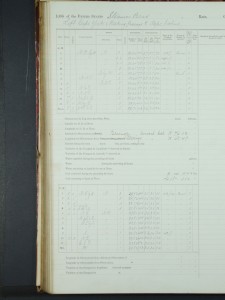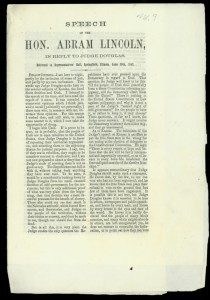The wondrous abilities of DH tools generate projects that are present day fascinations. In order to identify the varying types of DH projects, it is possible to categorise them according to DH methods used. A clear distinction of two DH methods is between mapping and audio analysis. The Virtual Paul’s Cross Project is a prime example of audio analysis while The Stanford Geospatial Network Model of the Roman World exemplifies mapping.

Some artefacts are best left in their original form for onlookers to marvel at. This is the case for the projects categorised under Archive. Information from these artefacts are used to inform the reader, but the actual artefact is unchanged and the image of the original is available. The Old Weather project gives users the opportunity to transcribe old ship logs to gather information on weather dating back to the mid-19th century. Figure 1 demonstrates what an old ship log looks like, and also exemplifies how difficult some artefacts are to decipher. In the case of the Lincoln at 200 project, Abraham Lincoln’s 1860 autobiography is the foundation for an insight into American history and how it relates to Lincoln’s experiences. The archival features of this project take the form of old maps, articles, pictures etc. These items inform the readers as they learn about how Lincoln’s own experiences relate to American history and culture. An artefact exemplifying this connection is Lincoln’s response to Stephen A. Douglas in regards to slavery shown in Figure 2.

By using archival documents to great digital artefacts, one can create DH projects that give insight to aspects of history that were not possible from simply looking at the artefact. The depth of what can be achieved digitally far exceeds what you or I could do, so by making something digital missing links can be bridged and more information can be extracted. The downside to this however, is that some digital artefacts lose their significance and meaning when they are transferred from being archival to digital. A challenge that I face in proceeding with the building of my DH project is ensuring that all the information that is extracted is informed by gaining contextual knowledge of the history surrounding the artefacts. This will safeguard the depth and core essence of the artefacts while still extracting accurate information.